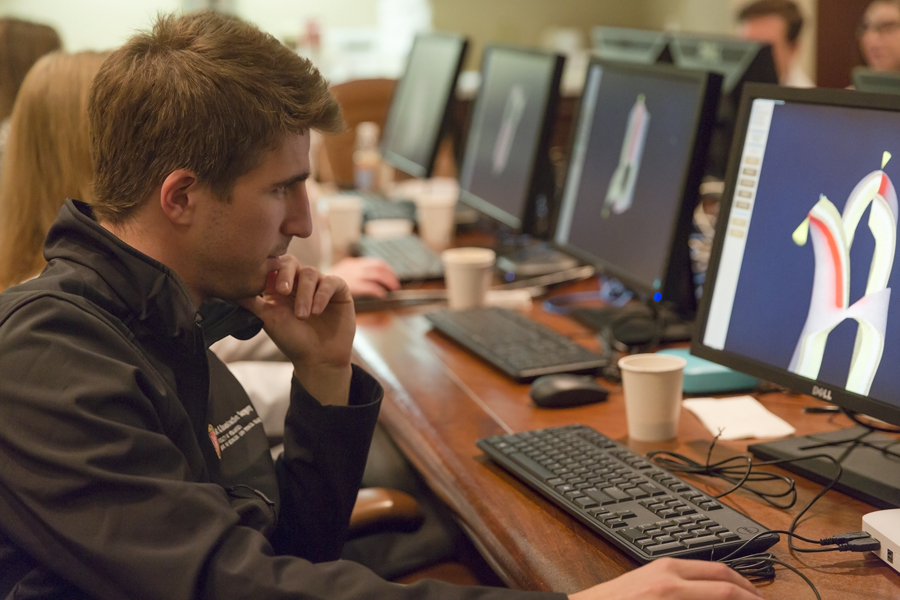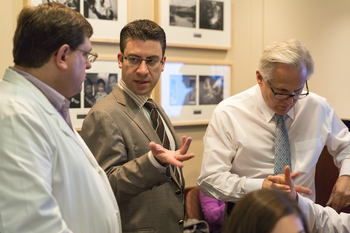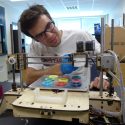‘Flight simulator’ for surgeons: Project joins computer science with medicine

A UW–Madison plastic surgery resident takes a first look at the surgical simulator under development. Though it requires further work, researchers say the approach has the potential to revolutionize surgical training.
Photos: Sarah Morton
University of Wisconsin–Madison computer science and medical researchers have teamed up to create a sophisticated new simulator to help surgical students practice detailed procedures before operating on live patients.
The simulator could have immense potential to reduce errors, minimize post-surgical complications and improve patient quality of life, says Eftychios Sifakis, an assistant professor of computer sciences.
To develop the simulator, Sifakis is collaborating with Timothy King, an associate professor in the School of Medicine and Public Health; Court Cutting, an international expert in cleft lip and palate procedures; and computer sciences graduate student Nathan Mitchell.
Earlier this month, the team gave UW surgical residents a preview of the tool by demonstrating how to make and close incisions on flat areas of skin, as well as how to make scalp incisions and suture them through flap techniques that promote the best possible healing.

Eftychios Sifakis, center, talks with Tim King, left, and Court Cutting during a training session for surgical residents.
Cutting likens the surgical simulators to flight simulators that give novice pilots extensive training before they enter real cockpits. “You can work out concepts and get well developed on how to handle almost any (flight) situation,” says Cutting. “Why don’t we train a surgeon in a simulator? Because there aren’t any.”
The UW simulator, which is still in the early stages of development, is different from existing surgical training tools because it emphasizes biomechanical accuracy. Surgeons must predict how soft tissue is going to respond to a procedure, and the tensile strength of tissue varies by the type of tissue and its location on the body, as well as by a patient’s age. An 80-year-old’s skin, for example, has vastly different bioelastic properties than that of a baby.
Ultimately, the three-dimensional renderings produced by the simulator will demonstrate how real skin will react under real conditions. Though this requires further development — as well as the acquisition of more data about live tissues — researchers say the approach has the potential to revolutionize surgical training.
“The applications are limitless,” Cutting says. “The human body is a complex, elastic object, and Eftychios Sifakis is going to be one of the first developing realistic, bioelastic models of the body. He’s a pioneer in bioelasticity. It’s never really been modeled like it should be.”
Sifakis says the end goal is to create a system that can be deployed on a tablet or other mobile device, making it nimble and portable for surgeons.
The National Science Foundation is funding the team’s efforts through its Smart and Connected Health initiative. Sifakis is serving as principal investigator for the three-year grant awarded in July 2014.
—Jennifer Smith
Tags: computers, health & medicine, technology

